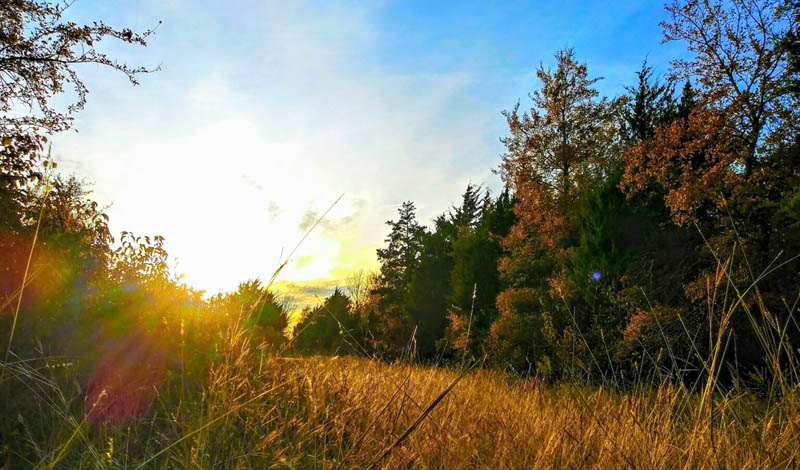
Cooper Lake State Park in eastern Texas is a great place for radio-orienteering.

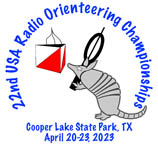
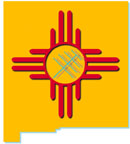 "I had no idea what I was getting myself into!" That's how Michael Hart KC6MEH replied when I asked about his first time competing in USA's national championships of Amateur Radio Direction Finding (ARDF). Michael had limited experience at first, but by the time he went home, he was enthusiastic and eager to teach the sport to hams and Scouts in his home town.
"I had no idea what I was getting myself into!" That's how Michael Hart KC6MEH replied when I asked about his first time competing in USA's national championships of Amateur Radio Direction Finding (ARDF). Michael had limited experience at first, but by the time he went home, he was enthusiastic and eager to teach the sport to hams and Scouts in his home town.
KC6MEH was one of 26 male and 8 female foxhunters who traveled to eastern Texas in mid-April for the 22nd annual USA Radio-Orienteering Championships. They came from nine states plus Ontario, Canada. All competitions took place in the 3026-acre Cooper Lake State Park (CLSP) near Sulfur Springs, Texas, which is about 95 miles northeast of Dallas/Fort Worth airport.
New Mexico Orienteers was the hosting organization, using maps provided by North Texas Orienteering Association. Event Director was Jerry Boyd WB8WFK. Course designers were Nadia Schlarlau KO4ADV (sprints) and Charles Scharlau NZØI (all others). Additional logistics and communications support was provided by Backwoods Orienteering Klub and White Rock Lake Amateur Radio Club.
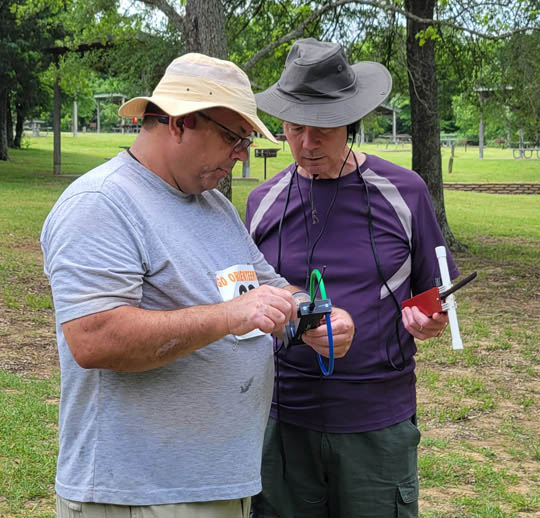
The main feature of CLSP is Jim Chapman Lake, a popular summer destination for boating, fishing, swimming and water skiing. The foxhunting courses were by the south shore. Tent and RV camping was available. Non-campers stayed in nearby hotels.
The gathering point each day was a group shelter on the lake shore. Practice, training and equipment testing took place on Wednesday, April 19, with transmitters on two-meter AM and 80-meter CW, in accordance with the detailed rules developed over three decades by committees of the International Amateur Radio Union (IARU).
Start With a Sprint
Thursday was the first day of formal competition. The day's event was the sprint, which was added to championship ARDF in 2012. A sprint course has two loops. The first has five slow-keyed 80-meter transmitters on one frequency, each transmitting for 12 seconds in sequence. The second has five fast-keyed 80-meter transmitters on another frequency, sending the same sequence. Competitors run through the start corridor leading to the area with slow-keyed transmitters.
After finding all of the required transmitters from the first loop in any order, they run through a spectator corridor to the area with fast keyed foxes. After finding all required transmitters from this loop in any order, they run to the finish line. After checking in at the shelter, competitors set out on a 3.2 kilometer trail hike to the starting area. According to competitor Bill Wright WB6CMD, it was best not to hurry. "You don't want to wear yourself out before you even start and then have to walk back afterward."
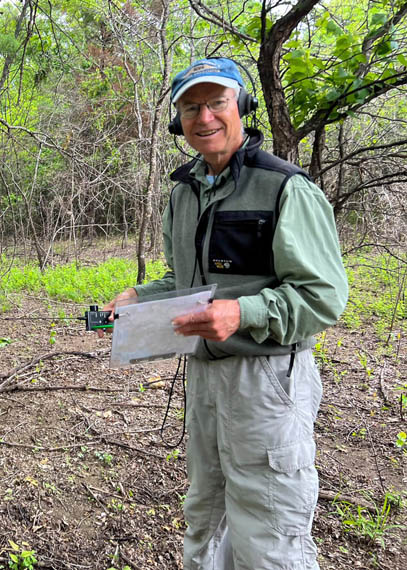
The terrain in this part of Texas is much different from the runnable forests that are typical ARDF sites elsewhere. Bill explained, "The maps had been used for an orienteering meet three years ago. In that time, vegetation changes and those changes are usually for the worse. I saw white on the map and thought it's runnable, but it really should be dark green because I had to fight to get through it."
To make it easier and safer, the course designers kept the transmitters close to the many trails. But competitors had to discover this for themselves. "The map was pretty good for some parts of the course," says Bill, "but for some other parts it wasn't. The sprint area was OK and pretty level. It looked on the map like you could run through it, but I tried it and got chewed up by the vines."
Imre Polik KX4SO was fastest in M21 (males ages 21 to 39), which was the only category required to find all ten sprint foxes. He did the 2.6 kilometer course in 47:36. The fastest pace on the sprint course was that of Vadim Afonkin, KB1RLI, who found his required eight transmitters on a 2.4 kilometer course in 25:48.
Friday's event was foxoring, another relatively new event that closely resembles classic orienteering because there are circles on the provided map near the continuously-transmitting QRPp 80-meter transmitters. Competitors use their orienteering skills to get to the circle locations, then perform direction-finding to home in on the foxes that can only be heard there. The foxoring course was in another part of the south shore area, with a 1.2 km hike to the start and then a hike back afterward.
Thunderstorms on Thursday afternoon kept the course-setters from completing placement of all of Friday's foxoring transmitters then, so the start of foxoring had to be delayed. One transmitter was non-operating, apparently damaged by a storm. It was a required fox for about half of the competitors. Most attempted to find the flag by sight once they had orienteered their way to the map circle. Norbert Linke discovered it in 3 minutes and 2 seconds and some others did it in less than four minutes. Norbert's total time on the 5.4 kilometer ten-fox course was 52:09.
The first classic event took place on Saturday. Two sets of transmitters were in the woods this day, one set on 80-meter CW and the other on two-meter AM. Persons in the categories for men ages 21 through 59 sought the two-meter transmitters and all others looked for the 80-meter transmitters. Another lightning-caused problem was discovered this day when one two-meter transmitter would not transmit the standard MCW tones in the AM mode. It was switched to FM mode, which worked but was difficult to tune in on some of the European AM ARDF receivers.
On two meters, Vadim Afonkin found his required four transmitters on a 5.3 kilometer course in 1:10:40 for the best time of the day. Norbert Linke had five required transmitters to find and he did the 7.2 kilometer course in 1:22:17. On 80 meters, the best male time was turned in by Iurii Kolesnykov for three required transmitters on a 4.4 kilometer course in 39:40 and the best female time was by Adalia Schafrath-Craig for three required foxes on a 3.9 kilometer course in 56:45.
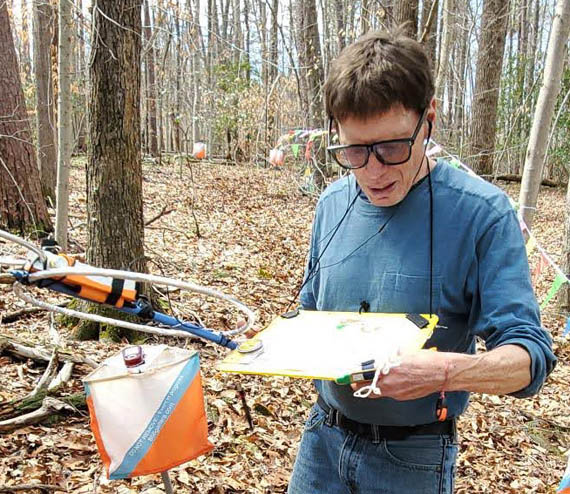
Sunday, the final day, featured another classic event. Those who hunted on two meters on Saturday sought 80-meter transmitters this day, and vice-versa. Once again, weather bedeviled the organizers, delaying transmitter placement. The original plan was to relocate all of them to prevent any unfair advantage of familiarity. However, many participants had tight travel plans and the weather delays threatened to keep them from finishing in time to make their flights home. So the 80-meter courses from Saturday were unchanged and only the short-course two-meter transmitters were moved. All competitors were on the honor system to not disclose any information about the Saturday courses to those who would run them on Sunday.
On eighty meters, the best time of the day was 44:04 by Norbert Linke for all five transmitters on a 6.7 kilometer course. On two meters, best time for four required transmitters was 1:22:48 by Tony Levand AA9CC on a 4.6 kilometer course. For three required transmitters, best was KO4ADV at 58:24 for a 4.3 kilometer course. AA9CC wrote that the there was constant rain and 50-degree temperatures. "It was typical Chicago weather, but darn cold for Texas."
Silver medalist WB6CMD said, "I was much slower than usual. It was very muddy and slippery and I was being very cautious. I didn't notice any problems with two-meter signal reflections because the terrain was pretty flat and we weren't close enough to the lake to get reflections from the water. But I did notice that my bearings weren't as trustworthy, perhaps because of the rain and wet trees. They were frequently in error by up to 45 degrees."
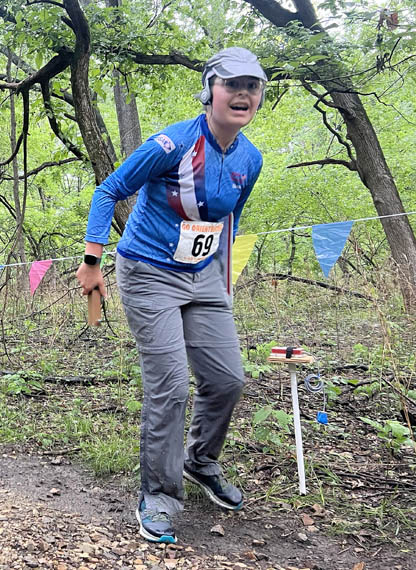
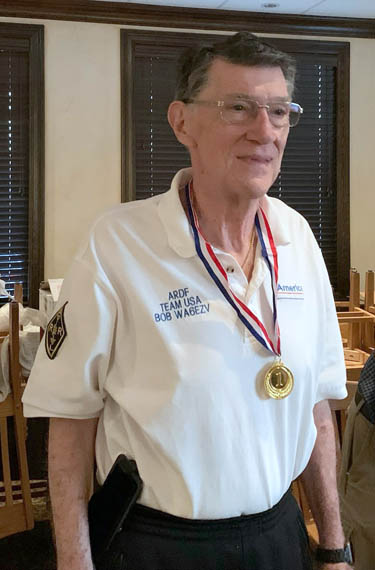
All in the Family
This year's USA championships had a special feature, a family competition as reported by Matt Sanderson KC9SEM of Glen Ellyn, Illinois. Matt and his wife Patty N9PLS, are long-time participants in the regular mobile transmitter hunts of the Chicago area. Their children, Jacob KD9VLF and Mackenzie KD9VVU have been riding along since infancy. "Jacob got his license during Field Day last year," Matt told me. "Mackenzie got hers in October, so she was nine and he was eleven."
Matt's family attended a Foxhunting Forum at Hamvention where they met long-time Ohio radio-orienteer Bob Frey WA6EZV. According to Matt, "Bob said, 'Why don't you come out and try it?' So last year when the USA championships were in Virginia, my daughter and I went there. Mackenzie was nine at the time. I reached out to organizers Ruth and Joseph and they were very accepting of the idea that we could try this out together."
KC9SEM and KD9VVU had such a good time in 2022 that the entire family decided to travel to Sulfur Springs for the 2023 championships. They wanted to compete against each other in two-person teams. There's no provision for that in the IARU rules, but the organizers created a special two-meter family category for them on Saturday, the first classic competition day. Their goal was to find four foxes.
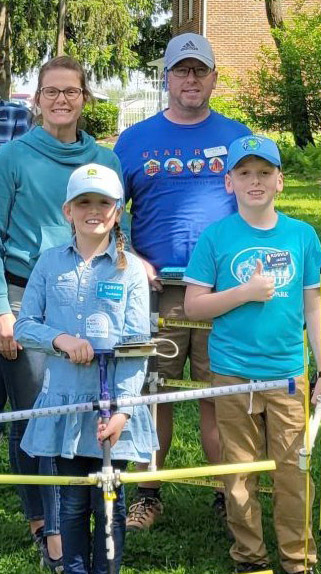
Team 2 was Matt and son. "Jacob did great," said Matt. "I had the antenna and he had the clipboard with the map. I would ask where he thought we were. I had him draw bearing lines on the map and then asked where he thought the transmitter would be. I put it all on him. We found three foxes and I think we just missed the time limit by about 30 seconds.
"It was great because the organizers and other participants were very supportive," Matt concluded. "We know we didn't qualify for medals because we were teams, but it gave the kids experience and it was fantastic for them. It was nice to have people that we didn't know welcome us with open arms, accept us and provide the opportunity to experience the sport."
Matt says he plans to take the family to Michigan in 2024 for the USA championships. I'm sure that before long, Mackenzie and Jacob, as well as their parents, will be taking on the courses as individuals.
Here are links to the official results.
Sprint competition, Thursday, April 20
FoxOring competition, Friday, April 21
Classic competition, First Day, Saturday, April 22
Classic competition, Second Day, Sunday, April 23
Portions of this report have been excerpted from my Homing In column in the August 2023 issue of CQ Amateur Radio magazine.
Joe Moell KØOV
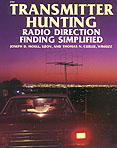 Go to Championships Foxhunting News -- Recent and upcoming ARDF championships events
Go to Championships Foxhunting News -- Recent and upcoming ARDF championships events
Go to International-Style Foxhunting Comes To The Americas -- How we're getting the ball rolling
Go to Equipment Ideas for Radio-Orienteering -- Simple and inexpensive receiving and transmitting solutions
Go to Radio-Orienteering News for Southern California -- Results and stories of recent radio-orienteering events in southern California, plus announcements of upcoming ones.
Go to Foxhunting for Scouts -- Let's get the kids involved
 Back to the Homing In home page
Back to the Homing In home page
This page updated 1 February 2024